I love sesame noodles, and when I discovered that you can make them with shirataki, I was so excited!
In this recipe more than any other I've tried, the result is VERY close to the real thing, although the texture is admittedly different.
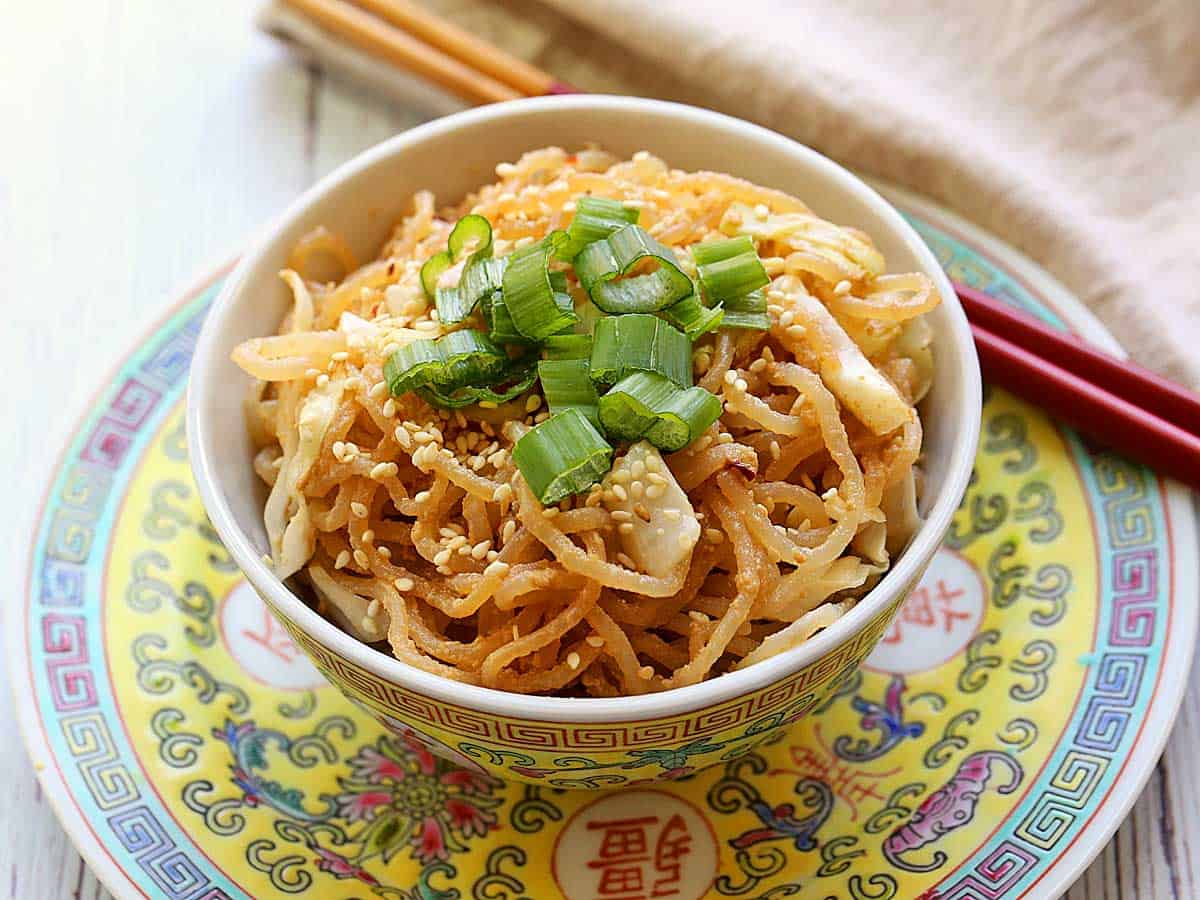
I love shirataki noodles. When prepared correctly, they provide a wonderful keto, low-carb, and gluten-free alternative to noodles and pasta.
I normally prepare them by boiling and dry-roasting them. Then I simply toss them with butter, garlic, and Parmesan. These buttered shirataki noodles are amazing.
But a few months ago I decided to try using them in a sesame noodles recipe. Success! These noodles are delicious, flavorful, and super-filling. I've been making this recipe regularly ever since. Today, I'm sharing it with you.
Jump to:
Ingredients
Here's an overview of the ingredients you'll need to make this tasty recipe. The exact measurements are listed in the recipe card below:
- Shirataki noodles: I use angel hair noodles in this recipe.
- Tahini: Also labeled as "sesame paste." The only ingredient is ground sesame seeds.
- Soy sauce: I use reduced-sodium soy sauce in most of my recipes. I find that traditional soy sauce is too salty. Obviously, you can use a gluten-free alternative if you wish.
- Rice vinegar: If you don’t have any on hand, it’s OK to use white wine vinegar instead. I don’t recommend using plain distilled vinegar, though. It’s too acidic, in my opinion.
- Red pepper flakes: They don't make the dish very spicy. They just add an extra layer of flavor.
- Shredded cabbage: I make life easy and use a bag of pre-washed and shredded cabbage. Make sure to shred it finely - in the video below I shredded it coarsely and while still very tasty, it didn't mix well enough into the noodles.
- For garnish: Sesame oil, toasted sesame seeds, and chopped scallions. But these are not just for garnish - they add a nice flavor, and the scallions also add a pop of color to the finished dish.
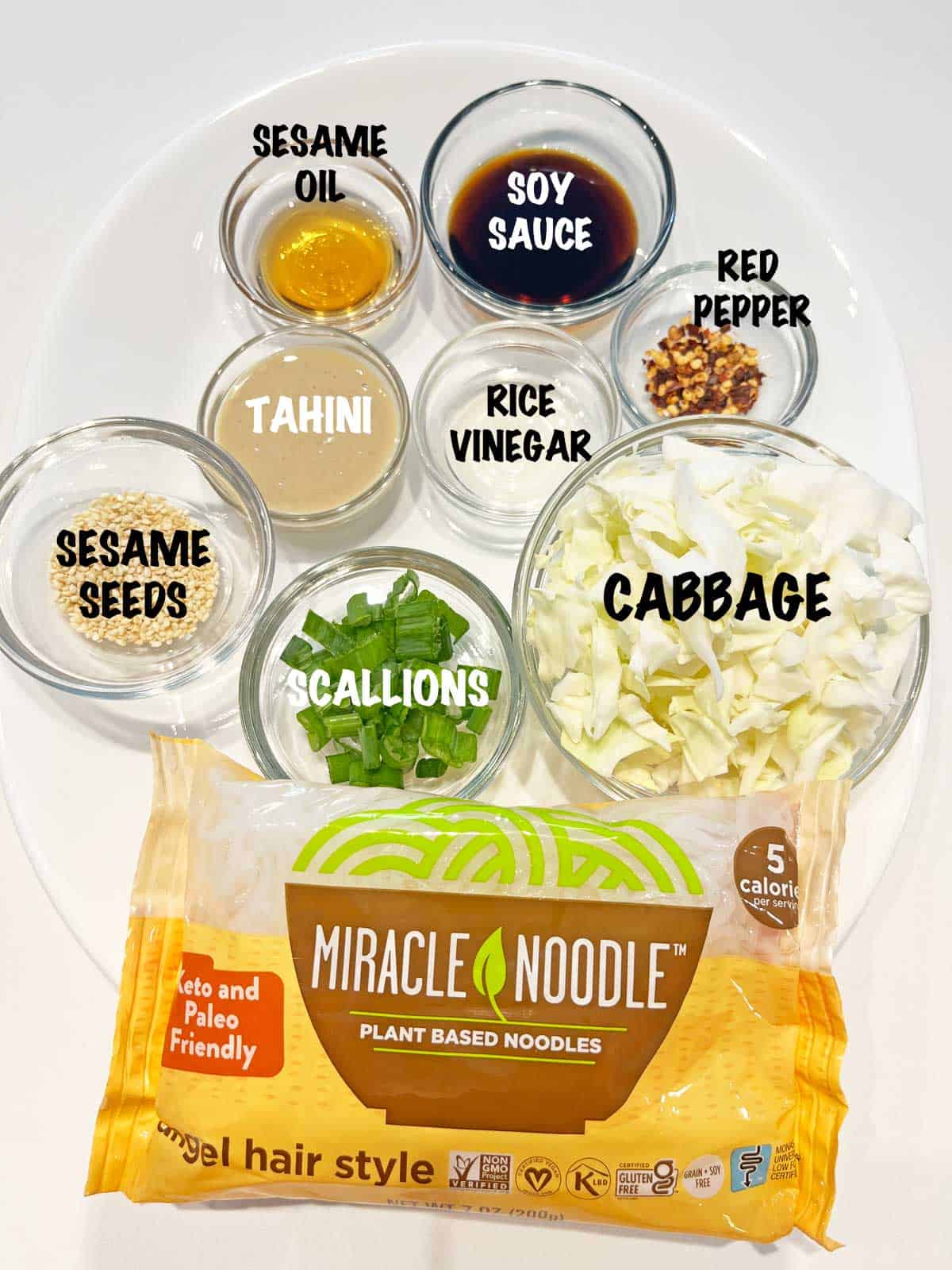
Instructions
This is not a difficult recipe, although prepping the noodles requires a few steps. The detailed instructions are included in the recipe card below. Here are the basic steps:
Rinse the noodles, boil them, then drain. This will help get rid of their fishy smell.
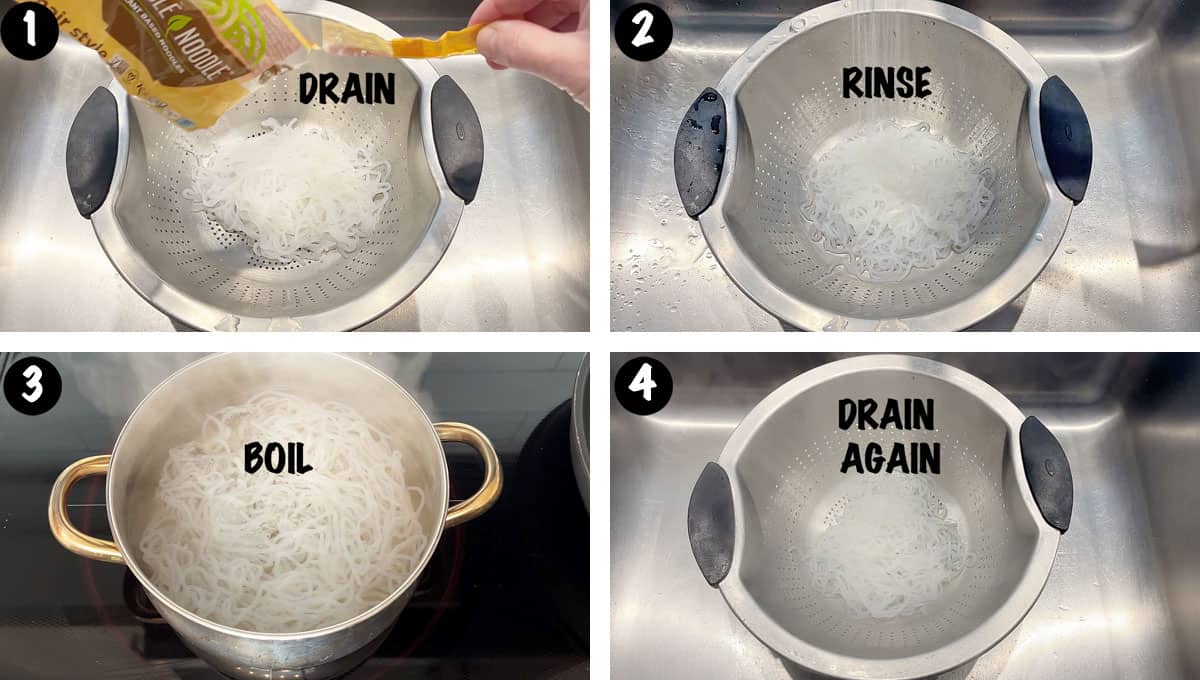
Toast the drained noodles in a dry skillet. This step will improve their texture.
Mix together the sesame paste, soy sauce, rice vinegar, and red pepper flakes. Add this mixture and the cabbage to the noodles. Stir to coat.
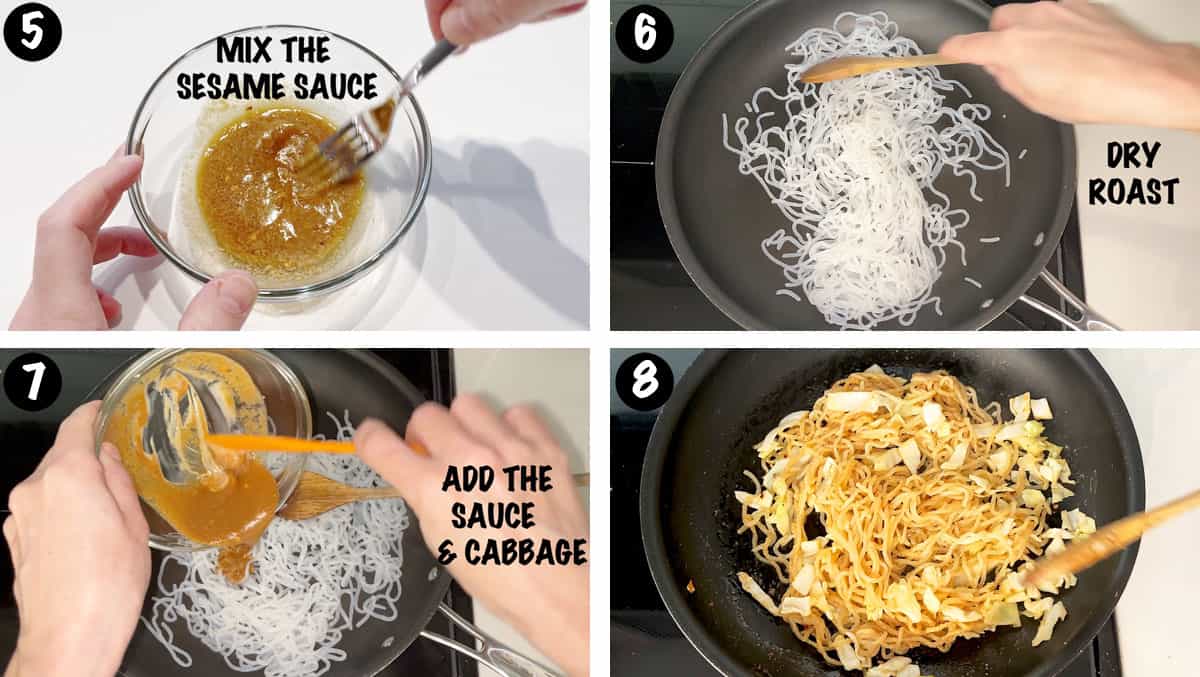
Transfer the noodles to a plate. Top with the sesame oil, sesame seeds, and scallions, then serve.
Expert tip
Right out of the package, these noodles have a texture that's very different than regular noodles and a fishy smell. But don't be afraid of them! With a few simple steps - rinsing, boiling, and dry-roasting, they become very palatable indeed.
Frequently asked questions
You start by rinsing them under cold water. This is important because they tend to have a fishy smell and rinsing them gets rid of the smell.
Next, you boil them. The last step is to stir-fry them in a dry skillet. This improves their texture. Now they're ready for any sauce you'd like to add!
They're made of water and glucomannan, a water-soluble fiber. This explains their rubbery texture and also the fact that they contain no calories and have no flavor of their own.
It's very close. The flavors are definitely there, and the experience as a whole is very close to the real thing. However, as one can expect, the texture is not the same as starchy noodles.
Variations
This recipe is excellent as is. But if you feel like varying it, here are a few ideas:
- Use natural creamy peanut butter instead of tahini.
- As mentioned above, you can mix cooked protein into the finished dish to turn it into a complete meal. Try cooked shredded chicken or tiny cooked shrimp.
- Top the noodles with a couple of fried eggs. This is another delicious way to turn them from a side dish into a complete meal.
Serving suggestions
Any Asian-style main dish is great with these noodles. I often serve them with Asian salmon, Asian meatballs, teriyaki salmon, or sesame shrimp.
They're also good all on their own for a light meal, especially for lunch. And unlike regular pasta, they're truly filling, even when eaten without protein.
However, feel free to add a protein source such as grilled shrimp or shredded grilled chicken breast.
Storing leftovers
You can keep the leftovers in the fridge, in an airtight container, for up to 4 days. Reheat them gently, in the microwave on 50% power.
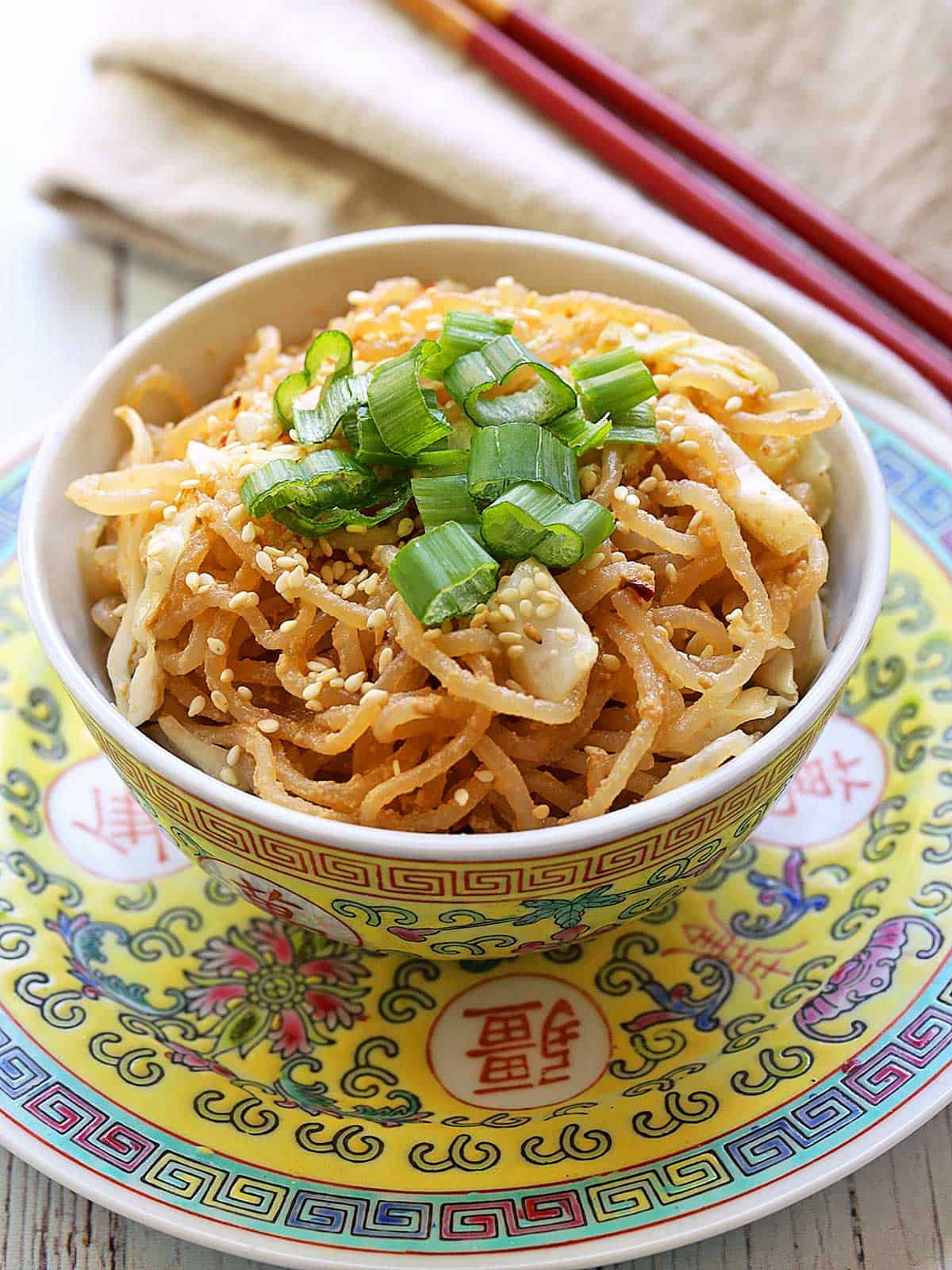
Related recipes
Foodie Newsletter
I send out a weekly newsletter with a recipe and tips. Want these recipes in your inbox? Subscribe today! You can unsubscribe at any time.
Recipe Card
Shirataki Sesame Noodles
Ingredients
- 1 (7 oz) bag angel hair shirataki noodles
- 1 tablespoon tahini (sesame paste)
- 1 tablespoon light soy sauce (or use a gluten-free alternative)
- 1 teaspoon rice vinegar
- ⅛ teaspoon red pepper flakes
- 1 cup finely shredded cabbage (2.5 oz)
- 1 teaspoon sesame oil
- 1 teaspoon toasted sesame seeds
- 1 large scallion chopped (green part only)
Instructions
- Bring a medium pot of water to a boil.
- Using scissors, open the shirataki noodles package. Pour its contents into a colander. Ignore the slightly fishy smell - it will rinse/cook out. Rinse the noodles under cold running water for 30 seconds.
- By now, your water should be boiling. Transfer the noodles to the boiling water, bring back to a boil, and boil for 3 minutes.
- While the noodles boil, heat a clean, dry medium-sized nonstick skillet over medium-high heat.
- Pour the cooked noodles back into the colander and drain well. Transfer the noodles to the hot skillet and dry-roast them (adding no oil to the skillet), stirring, for 1-2 minutes, until they are visibly dry and make a squeaking sound when moved in the skillet. This step will get rid of the shirataki's rubbery texture, and help the noodles better absorb the sauce.
- While the noodles are dry-roasting, use a fork to mix together the sesame paste, soy sauce, rice vinegar, and red pepper flakes. Add the mixture to the dry noodles in the skillet (use a small rubber spatula to scrape it all off the mixing bowl) along with the shredded cabbage. Stir-fry until the noodles and cabbage are thoroughly coated, 1-2 minutes.
- Turn the heat off. Transfer the noodles to an individual bowl. Drizzle with sesame oil and top with sesame seeds and chopped scallion. Enjoy immediately.
Video
Notes
- Use natural creamy peanut butter instead of tahini.
- You can mix cooked protein into the finished dish to turn it into a complete meal. Try cooked shredded chicken or tiny cooked shrimp.
- Top the noodles with a couple of fried eggs. This is another delicious way to turn them from a side dish into a complete meal.
Nutrition per Serving
Disclaimers
Cup measurements refer to the standard American cup, which is 240 milliliters. Most of my recipes are low-carb (or keto) and gluten-free, but some are not. Please verify that a recipe fits your needs before using it. Recommended and linked products are not guaranteed to be gluten-free. Nutrition info is approximate, and the carb count excludes non-nutritive sweeteners. Nutrition info may contain errors, so please verify it independently. Recipes may contain errors, so please use your common sense when following them. Please read these Terms of Use carefully before using any of my recipes.


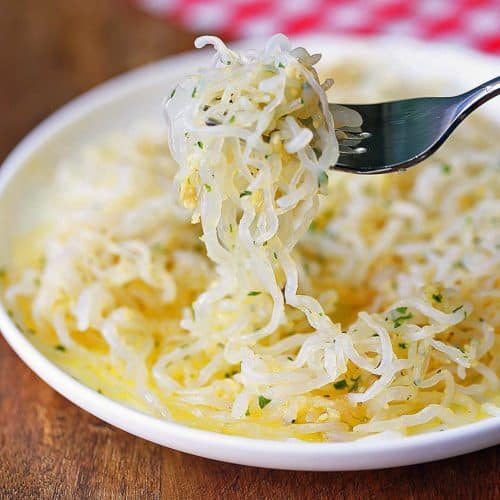
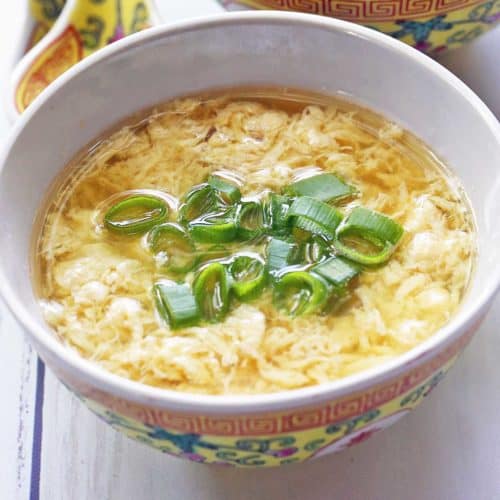
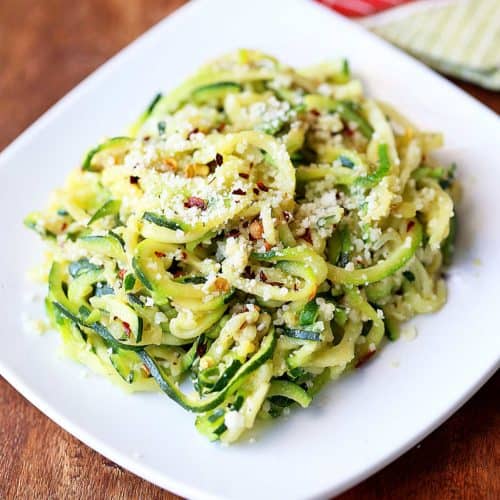
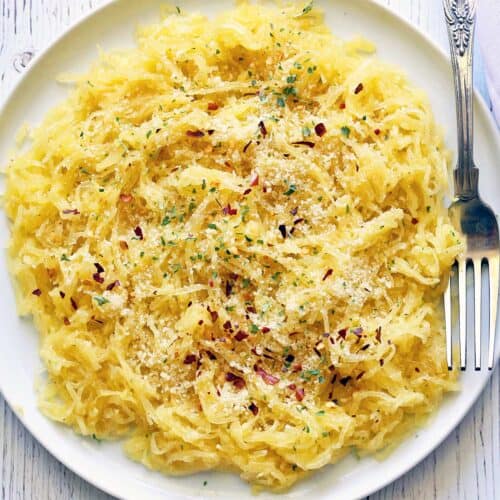
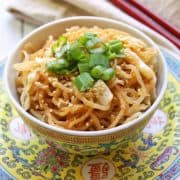
 Vered DeLeeuw, LL.M., CNC, has been following a low-carb real-food diet and blogging about it since 2011. She's a Certified Nutrition Coach (NASM-CNC), has taken courses at the Harvard School of Public Health, and has earned a Nutrition and Healthy Living Certificate from Cornell University. Her work has appeared in several major media outlets, including Healthline, HuffPost, Today, Women's Health, Shape, and Country Living.
Vered DeLeeuw, LL.M., CNC, has been following a low-carb real-food diet and blogging about it since 2011. She's a Certified Nutrition Coach (NASM-CNC), has taken courses at the Harvard School of Public Health, and has earned a Nutrition and Healthy Living Certificate from Cornell University. Her work has appeared in several major media outlets, including Healthline, HuffPost, Today, Women's Health, Shape, and Country Living. 
Kate
At last, a way that I can eat Konjac noodles. In the past, I found them inedible, but these were actually, dare I say it… Nice and enjoyable!!! Never thought I’d say that. So thank you!
Vered DeLeeuw
Yay! I'm so glad you enjoyed these noodles, Kate! Thanks for leaving a comment.
Marianna
I have never enjoyed eating shirataki noodles before trying your recipe. Thank you for teaching me how to turn these noodles to a great tasting Asian noodle!! The recipe is wonderful! I can enjoy eating sesame noodles once again.
Vered DeLeeuw
I'm so glad you enjoyed this recipe, Marianna! Being able to enjoy old favorites is priceless.